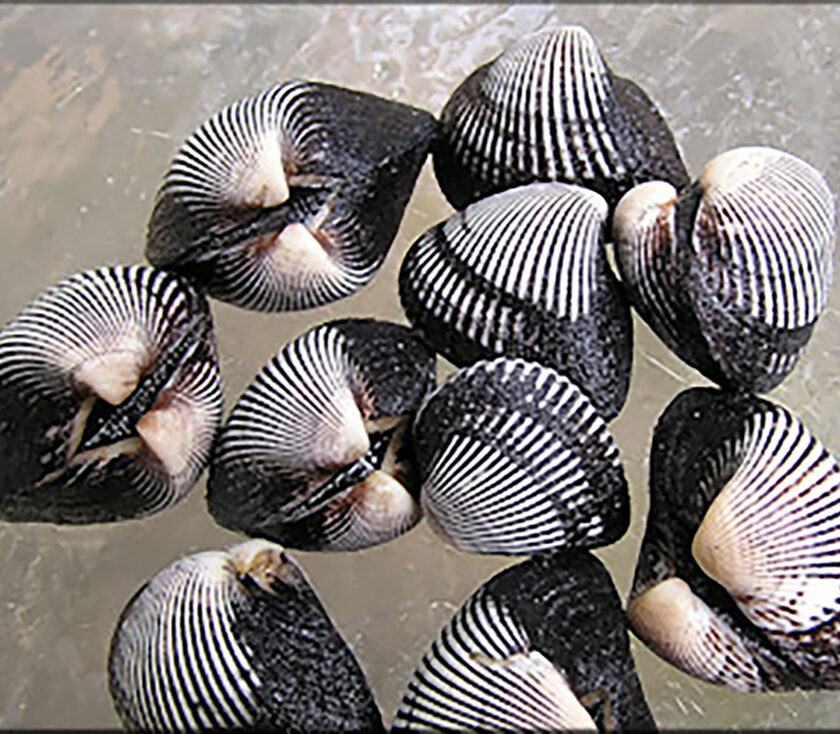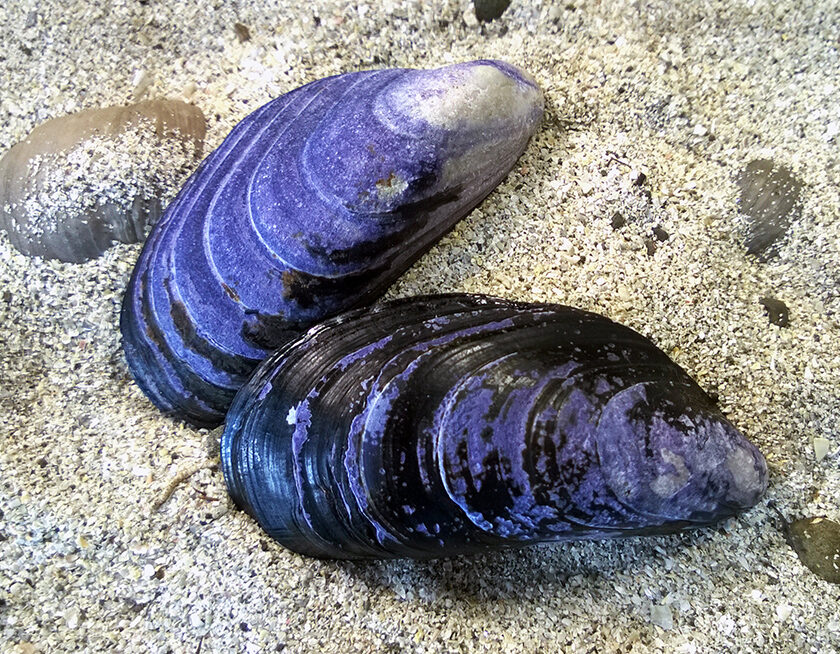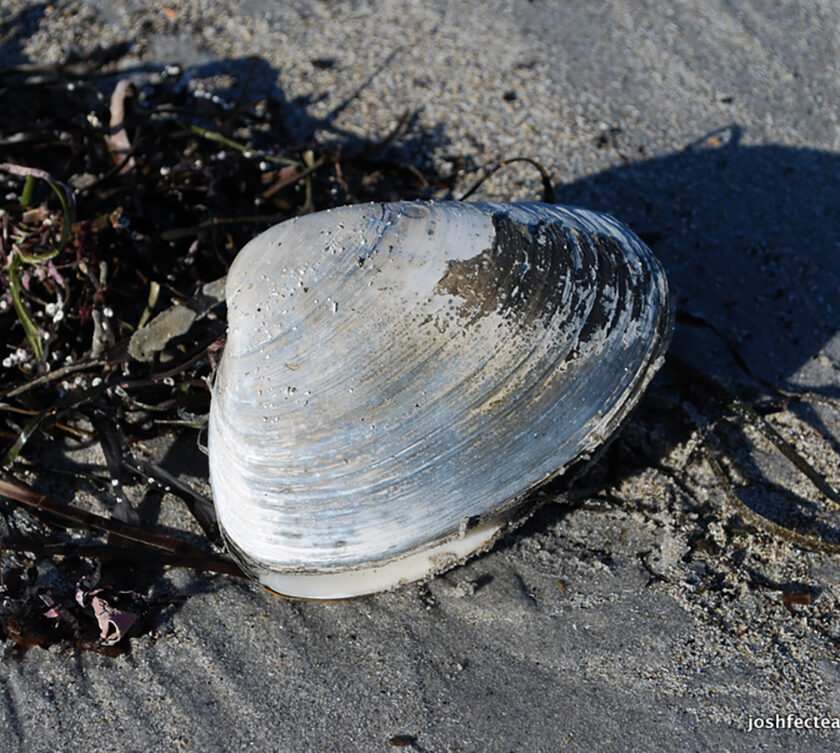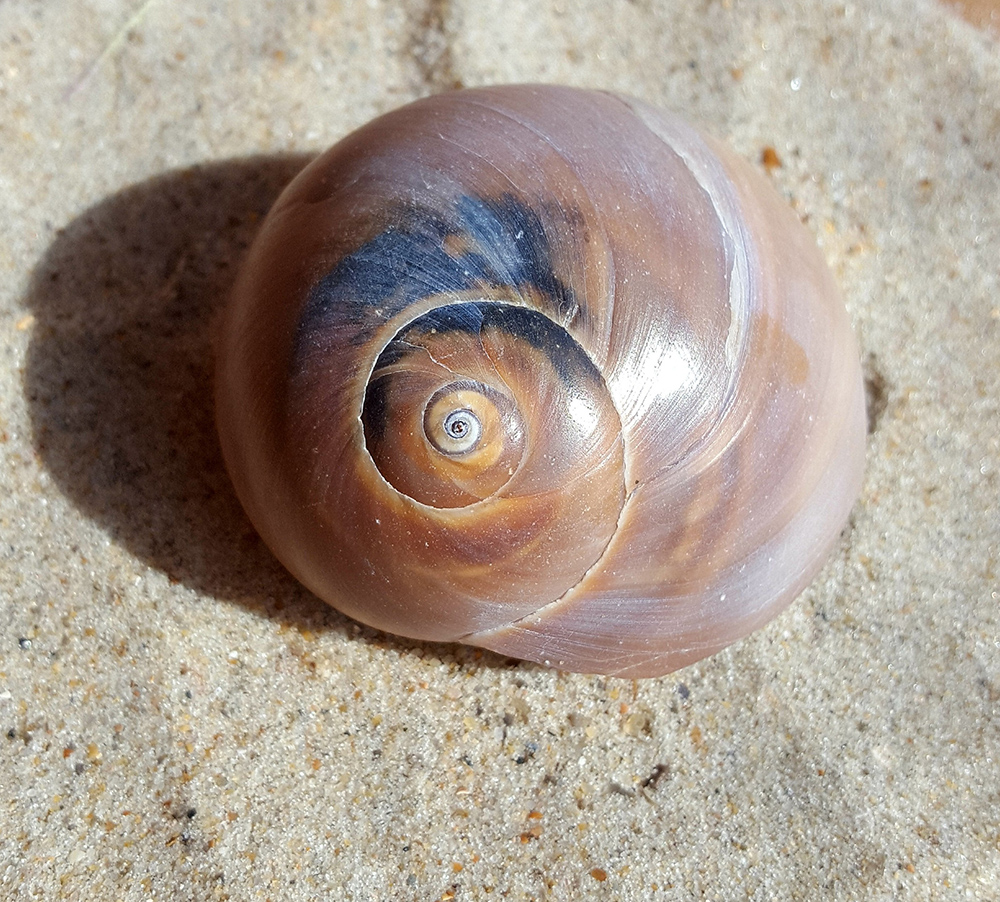By Sarah Fertsch
Staff Writer
Looking to sell seashells by the sea shore? You’ve probably seen hundreds of shells in a variety of shapes and colors as you’ve enjoyed New Jersey’s beautiful beaches. The sand you’ve stood on has been formed by rocks and shells beaten down by waves over hundreds of thousands of years. On northern beaches like Sandy Hook, you’ll notice coarser sand, and in Atlantic City, sand tends to be softer and finger. Down by Cape May, there’s pebbles and Cape May diamonds. Why? It is because of the differences in land masses, which cut the waves at different angles, causing sand’s texture to be irregular. Amongst these sands and rocks, shells along the coast of New Jersey tend to stay the same. Here are some of the most common shells you’ll find on the beach along the Jersey Shore:
Knobbed Whelk
This is New Jersey’s state shell. The knobbed whelk comes from a predatory sea snail, which are native along the east coast between Maine and northern Florida. The shell is dextral, meaning the snail is “right-handed,” or moves from the right side. The color is usually pale gray or ivy and the inside tends to be a muted orange. These snails live in deep water, and when they die or switch shells, their little mobile homes wash up on our coastline. Like conches, you can eat knobbed whelks deep-fried or in a salad.
Blood Ark
These white bivalves can be found from Canada to Brazil. Surprisingly, the shell has dark brown fur growing on it! The periostracum protects the invertebrate and makes the shell thick and sturdy. The 35 hinglines between the shells act as teeth for the clam. The animal is named as such because it is one of the few mollusks to have red blood. It thrives in about ten feet of mood below shallow water.
Common Slipper Shell
This shell belongs to a medium-sized snail found across the Atlantic Ocean. The boat shell, as it is also known, is considered an invasive species in Italy, Denmark, the United Kingdom, France and Spain because of its damage to oyster fisheries. They are often consumed as a part of clam juice or clam broth, and in Hawaii, they are considered a delicacy.
Ponderous Ark

Rarer in New Jersey, this shell is one of the most common shells found on Sanibel Island in Florida, which is considered a beachcombing Mecca. Many tourists confuse this shell with a white shell that had tar spilled on it. It can be typically found between Virginia and the Gulf of Mexico. It resides in shallow water on the ocean floor.
Blue Mussel

Also known as the common mussel, this edible bivalve can be found all over the world, living primarily in intertidal areas. These mussels attach themselves to rocks and other hard substrates through their byssal threads, a secreted substance from the mollusk’s foot. Mussels have separate genders, and each male and female secretes their sperm/eggs into the water column for fertilization. This species is highly targeted by hungry jellyfish, sadly.
Atlantic Surf Clam

Surf clams are the largest bivalves in the North Atlantic Ocean. They can be commonly found between Maine and North Carolina, growing almost 9 inches long. They are hand-harvested and commonly consumed in chowders, pastas, and stews. Surf clams can live up to 35 years and eat plankton and algae.
Northern Quahog
This farmed clam is sustainably grown and harvested across the east coast. They can grow up to five inches long and live between 12 and 20 years. Females release up to five million eggs into the water column at a time! They burrow in the sand in intertidal areas and thrive when the salt content of the ocean is high.
False Angelwing
This is yet another species of clam. They have spoon-shaped wings, lending to their divinely elegant name. These mollusks’ shells are more brittle than most others, so be careful if you spot one. Angelwings are common in the Atlantic Ocean, particularly along New England, and their shell colors range between off-white and muddy yellow.
Bay Scallop
Scallops move by closing and opening their ribbed shells, also allowing them to filter-feed on plankton. Their rounded shells vary in color between purple, blue-gray and red-brown. Scallops have short tentacles and between 30-40 eyes. They use their eyes to detect predators, such as sea stars.
Shark Eye
This mollusk is cannibalistic. This animal is a part of the moon snail family and can be found across the Atlantic Ocean and live under the sand, using their feet to move from spot to spot, ranging from shallow waters to over 190 feet deep. When the shark eye is hungry, he latches onto another snail and produces an acid. He drills a hole through their shell with his sharp radula (similar to a tongue in humans). Then, he injects his acid through the hole to kill his prey, and slurps him through the hole in shell and feasts.
Eastern Oyster
Centuries ago, oyster populations were plentiful, but because of disease and overfishing, oysters had become endangered in the 20th century. Thankfully, populations have bounced back to healthy numbers. Oysters are wild-caught and farmed and can often be found in American cuisine. Adult oysters are sessile, meaning they stay in the same place for their entire lives. Their shell varies from off-white to brown in color.










